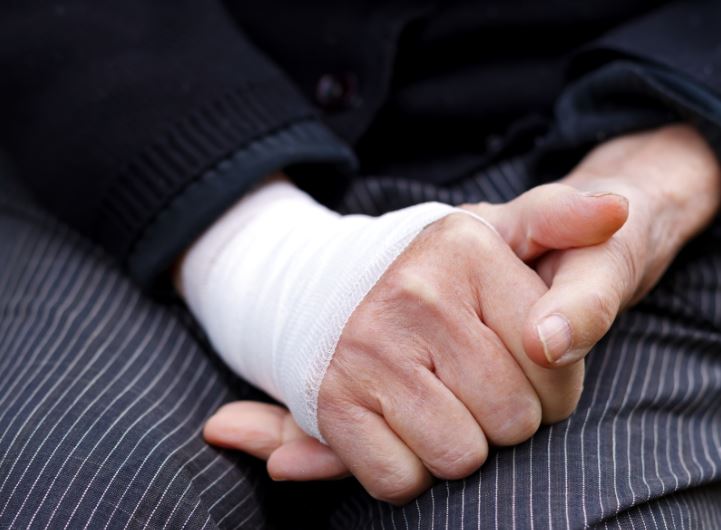A momentary loss of balance resulting in automatically sticking of hands and accidental falls can cause a sprained wrist.
Once the hand hits the ground, the force of the impact tends to bend it back towards the forearm. The sudden stretch of ligaments that connect the wrists and hand bones can result in tiny tears. In worse cases, it can result in a complete break to the ligament.
The good news is that minor to moderate wrist pain should heal on its own with first aid treatment.
What Is A Sprained Wrist?
A sprained wrist is an injury where the ligament in the said area stretches or suffers from tears. The ligaments are bands of tissue that attach to the bones, joints, and organs and help hold them in place.
A sudden fall injury can cause the wrist to twist or bend, causing damage to the ligaments.
Wrist sprains are common, and the impact can range from mild to severe, depending on the level of damage the ligaments sustained.
For this reason, sprains are graded into three levels –
- Grade 1 sprain (mild) – Ligaments are slightly stretched but not torn.
- Grade 2 sprain (moderate) – Ligaments are partially torn and may involve some loss of function.
- Grade 3 sprain (severe) – Ligaments are completely torn or are pulled off their attachment to the bone.
The grade 3 sprain requires immediate medical or surgical care. A ligament that tears away from the bone takes away a small chip of bone, which is called an avulsion fracture.
Most wrist sprains are treatable at home through first aid remedies and gentle exercises. However, severe sprains may require a splint or surgery.
Sprained Wrist Symptoms
The signs and symptoms of wrist pain may vary depending on the location and intensity. The most common include:
- Swelling and pain at the injury site
- Persistent pain when trying movements
- Bruising or discolouration of the skin in the wrist area
- Tenderness at the injury site.
- Feeling of tearing inside the wrist
- Warm, feverish feeling to the surrounding area
Note: A wrist injury that appears to be mild with only minimal swelling could still involve a torn ligament. In such cases, surgery is a requirement to avoid long-term complications.
First Aid Treatment For Sprained Wrist
Immediate treatment for a sprained wrist is vital, and get a proper diagnosis from a doctor after a few days if the symptoms persist.
Get Help, If Necessary
See a doctor right away or call 000v for an obvious deformity, severe pain, or numbness. Notice if the person cannot move their wrist or maintain a grip, as these are signs of a possible fracture.
Support The Injury
Provide support to the injured wrist and arm by creating a makeshift splint using a ruler, stick, or rolled-up newspaper. A pillow or sling can also help until advanced support is available.
Rest The Wrists
Minimise any movements involving the wrist to prevent further injury.
Control Swelling
Apply ice to the injury site for 20 minutes for at least four to eight times on the first few days. If compression wraps are available, use them to further reduce swelling. Then, elevate the wrist above heart level.
Treat Symptoms
Give the person over the counter (OTC) pain medications such as acetaminophen (Tylenol), ibuprofen (Advil, Motrin), or naproxen (Aleve, Naprosyn) to help with the pain and swelling.
Never give aspirin to anyone under the age of 18 unless prescribed by the doctor for treating a specific health condition.
Follow-Up
For pain and swelling that gets worse in 24 hours, go to the emergency room or seek advice from a doctor.
The doctor may order a series of tests to rule out fracture and conduct an examination on the wrists to look for any signs of tendonitis, arthritis, gout, and infections.
When To See A Doctor?
In most cases, a sprained wrist sits on overnight before seeking medical care the following day. When deciding to wait for treatment until the following day, ensure that the wrist is stable and the pain is not too intense.
However, there are warning signs to look out for that indicate the need for urgent medical care. These include intense pain, deformity of the wrist or the arm, broken bones, and numbness on the wrist and surrounding area.
Learn First Aid
A pain, swelling or bruising around a joint or muscle after a sudden movement may indicate a sprain or strain.
Learn first aid for someone who has a strain or a sprain. Book a course to learn more.








